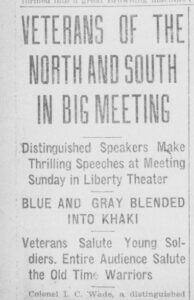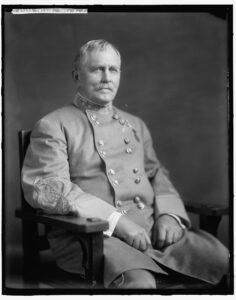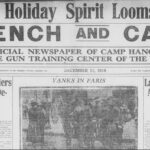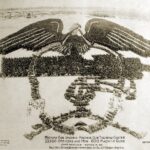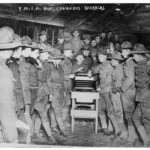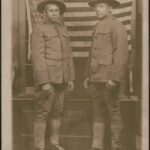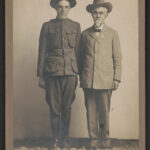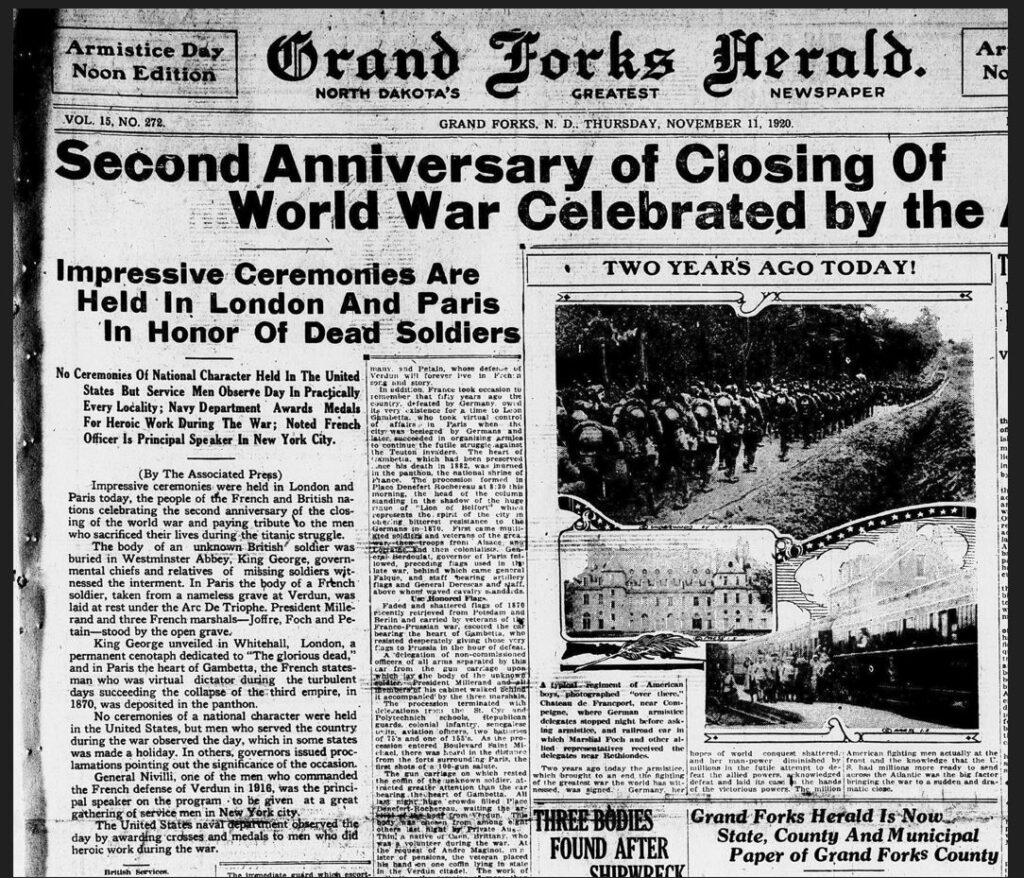After the United States entered World War I in 1917, Camp Hancock was built near Augusta, Georgia as a training site for U.S. troops. Camp Hancock was named after Civil War general and native Pennsylvanian Winfield Scott Hancock. According to Veteran Voices Military Research, “Camp Hancock was established in July 1917 to serve as a training camp for the Pennsylvania National Guard units who would comprise the 28th “Keystone” Infantry Division, which occupied the camp from August 1917 – May 1918. After the 28th Division embarked for Europe the camp established a machine gun training center. It served as a demobilization center from December 1918 – March 1919 when it was closed.”
About 53 years after the end of the Civil War and a few weeks after the armistice ending World War I, a meeting was held near or at the camp that honored Civil War veterans and current doughboys. From the December 11, 1918 issue of Trench and Camp:
Colonel I. C. Wade, a distinguished member of the G. A. R. and Captain J. Rice Smith, equally distinguished as a cavalry officer in the Confederate army, were the chief speakers at the Y. M. C. A. meeting held in the Liberty Theater last Sunday afternoon at 3 o’clock. Colonel B. H. Teague, of Aiken, S.C was chairman, and performed his duties with rare charm. On the platform were thirty Confederate and a few Grand army veterans. Colonel Brandt, Major Scott and several other officers of the camp, together with a few chaplins [sic] and Y. M.C. A. officials. Madam Backlor, the soloist, sang “Consider and Hear Me,” beautifully, receiving marked applause. The Headquarters M. G. T. C. Band, Joseph Marra, leader, rendered excellent service.
Colonel Wade, who enlisted in the Union army as a drummer boy when only 13 years of age and who is now on the military staff of General Watson at whom he shot sixteen times in one battle in the Civil War, gave several personal anecdotes, some of which were quite startling, and declared his belief that chivalry had reached its climax of perpection [sic] in General Lee (Confederate), and General Howard (Federal).
Captain J. Rice Smith thrilled his audience with an address which in every respect measured up to a high oratorical standard. The beauty of rhetoric and passion of delivery enforced the noble thought that “God moves in a mysterious way his wonders to perform.” God, he said, was against slavery and in favor of the Union, and all the old Confederate soldiers can now welcome the Northern soldiers in love, glad that the war ended as it did.
Captain Smith said that his grandfather fought in the Revolutionary War, his father in the Mexican war, he himself in the Civil War, but that his son now in France, was in the biggest and the best war ever fought on this earth.
The most dramatic event of the meeting was when Brigadier General A.J. Twiggs marshalled the old Confederate soldiers in solid array on the platform of the theater and had these veterans of the Civil War give the military salute to the young soldiers composing the audience.
Hardly had this been done when Colonel Brandt strode to the front and gave the order: “Attention!” “Salute!” The entire audience arose and saluted the old veterans while cheers and occasional “rebel yell’ showed their appreciation of this courtesy.
A flashlight photograph of the audience and platform was taken at the moment of salute.
At the conclusion of the meeting Mr. Ralph A. Tracy, the camp secretary, stated that other meetings of equal interest and value, might be expected every Sunday afternoon, to which the soldiers of Camp Hancock were invited. A 20-minute “drop-in” Bible class led by Dr. Camden M. Cobern, the camp religious work director, will hereafter follow each afternoon program.


